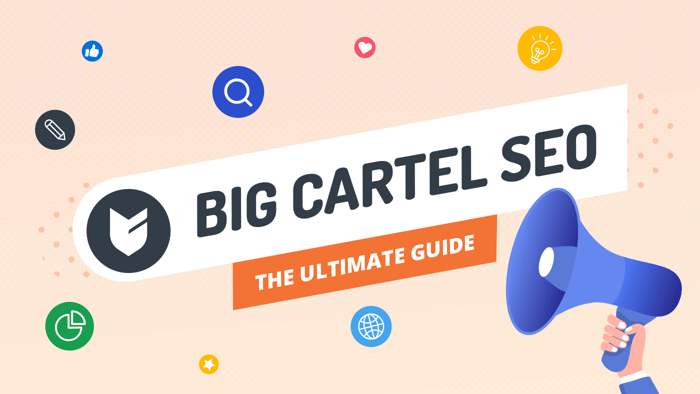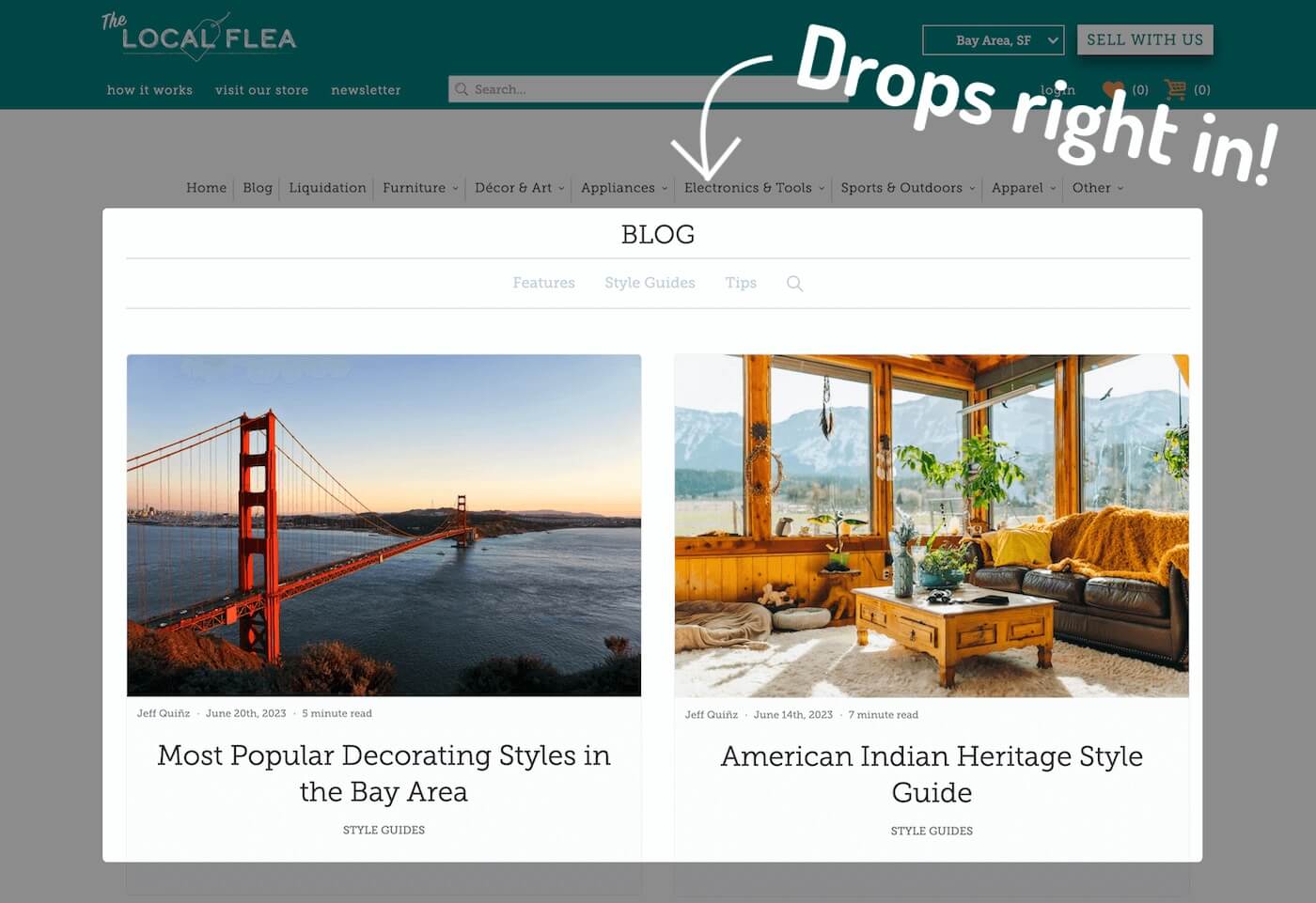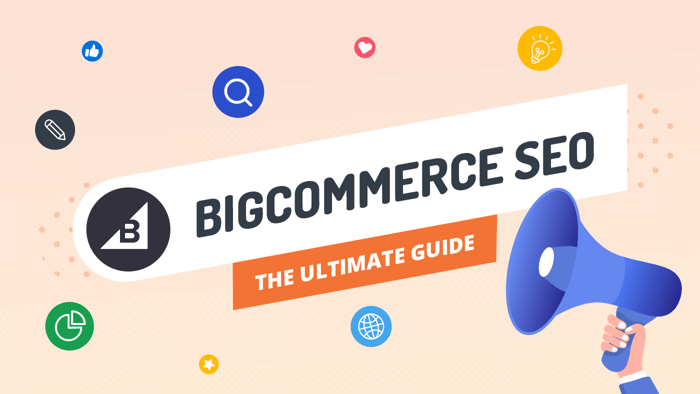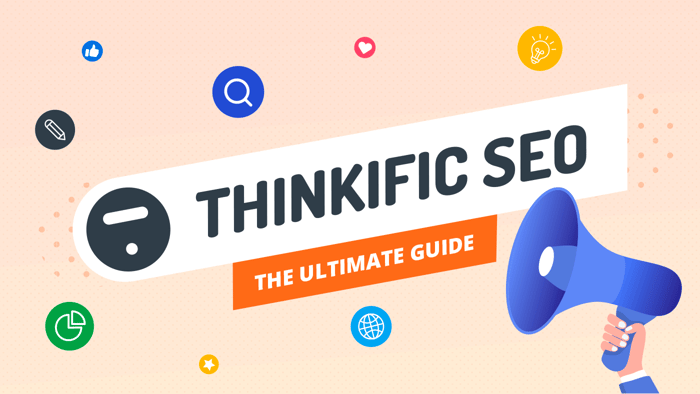This Big Cartel SEO guide is exactly what you’d expect a Big Cartel SEO guide to be: a handy way to acquire brand-new knowledge about doing SEO in a Big Cartel online shop or polish your already hard-earned SEO wisdom.
In that regard, it’ll probably lift your spirits to know that this guide helps you perfect the art of:
Implementing Big Cartel SEO strategies and tactics that work
Using effective SEO tools to lighten your workload
Measuring the success (or the lack thereof) of those strategies and tactics
Okay, now let’s see exactly where this guide guides you.
Table of Contents
- Your Initial Setup
- Your Online Store Essentials
- Your Products and Product Pages
- Your Big Cartel Blog
- On-Page SEO
- SEO Analytics
- Advanced SEO Strategies
- Final Thoughts
Your Initial Setup
Use a Custom Domain
When you start with Big Cartel, you have two options: to use a custom domain with a premium plan or to use a bigcartel.com subdomain with the free plan.
Even though it’s good that Big Cartel supports clients by providing a free bigcartel.com subdomain, a custom domain is always better from an SEO standpoint. And generally better for business.
Why? you might ask. Let’s start from the beginning.
Custom domain refers to a website name plus the part that comes after the dot – such as com, net, org, and edu – called the TLD or top-level domain. It’s highly recommended that you stick with com. It’s by far the most familiar TLD – synonymous with the internet for many users – and familiarity breeds trust.
As far as the website name is concerned, your best bet is to opt for something that clearly expresses the unique identity of your brand and is relatable to your target audience. Keep it simple, short, intelligible, and memorable.
Try to avoid hyphens, and don’t use underscores or other uncommon symbols, or for that matter, anything that turns your domain name into a hodgepodge (unless you sell hodgepodge, which we doubt you are doing on a Big Cartel online shop!).
Just consider these two two domains: mybrand.com and mybrand.bigcartel.com. Obviously, the first one is the custom domain, and it conveys a message – your brand is here, and it stands alone. It radiates professionalism. A domain like mybrand.bigcartel.com doesn’t come close to that.
Since custom domains are more user-friendly and meaningful, and search engines are all about being as helpful and convenient to users as possible, it’s reasonable to expect search engines to tilt toward websites with custom domains.
Big Cartel allows you to:
- Connect a custom domain you already own.
Purchase and automatically connect a new domain from Cloudflare, GoDaddy, or other supported domain providers.
Set up a domain manually if your domain provider is not on the list of officially supported domain providers.
Verify Your Domain
The verification of your website domain is necessary regardless of the domain name registrar from which you buy a domain. It proves that you provided correct information and that you’re the genuine owner of that domain.
Usually, you receive a verification link via your email address soon after the purchase.
Typically, you can complete the verification within 15 days. If you fail to do so, your domain will be temporarily suspended.
There are many benefits to domain verification, the most important being:
It prevents people with malicious intent from appropriating your domain.
It’s a fundamental step toward establishing your website’s credibility.
Submit Your Sitemap
A sitemap is just what it sounds like: a map of your website – in this case, a Big Cartel online shop. But it’s important to note that a sitemap contains only the pages that should be visible on the internet, not just any ol’ pages.
This map reveals the structure of your website to Google and other search engines: the pages it includes, the content on those pages, which ones are the most important, and similar information is all contained in a sitemap.
A sitemap lets search engines understand your website better and find its pages faster. That further allows those pages to be indexed sooner than if you left everything for search engines to figure out on their own.
Sitemaps are especially important for websites that are massive and complex, i.e., they have many interrelated pages.
But keep in mind that a search engine can understand the structure and hierarchy of your website as well as the relationship between different pages even without a sitemap – through internal and external linking (more on this later).
However, submitting a sitemap is still highly recommended to ensure more effective indexing.
Besides, it doesn’t do any harm, and it’s a good practice, so why not have it?
The good news is that Big Cartel has got your back on this. It automatically generates a sitemap for stores built on top of it, which is pretty cool, right?
Enable Sitewide SSL
SSL (Secure Sockets Layer) is a technology that secures your online shop by encrypting its communication with the rest of the internet.
Encryption means the data traveling to and from your website is not transferred as plain text, which anyone can read, but is scrambled in mathematically meaningful ways so as to appear as entirely random information to the prying eye, even when someone knows how to peek at it.
The benefits of SSL are obvious.
Imagine sensitive data such as credit card information transferred as clearly readable numbers and words. Now imagine a customer buying something from your Big Cartel store and a total stranger with the right skills being able to see your customer’s credit card number, full name, and CVV number.
What a disaster that would be for any e-commerce and online business! Well, SSL is here to prevent that from happening.
Big Cartel covers this side of your online shop from the very beginning. In virtually all cases, Big Cartel applies SSL to your entire store, regardless of whether you’re on a premium or free plan.
The only exception is when you have improperly secured assets, like images, that you have added yourself. However, that’s fixable, too, and Big Cartel can help you enable SSL sitewide, even in those rare cases.
Set Up Google Search Console, Google Analytics 4, and Bing Webmaster
Setting up Google Search Console, Google Analytics, and Bing Webmaster is key to developing a strategic approach to Big Cartel SEO. Each of them allows you to follow what happens with your online store in terms of website traffic, engagement, leads, sales, popular pages, demographics, and other significant data.
We’ll talk more about their importance and use in the section on SEO analysis. For now, it’s worth noting that they’re all free tools, which makes them must-haves for anyone who plans on doing proper Big Cartel SEO.
Your Online Store Essentials
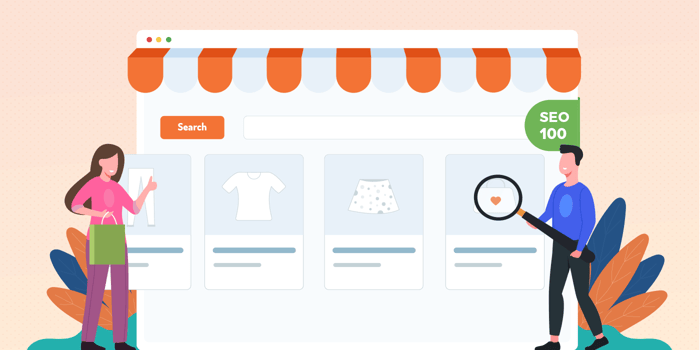
About Us
The About Us page, contrary to what many probably think, is a pivotal page on a website – it’s right behind the Home page in importance. Hence, it requires proportional attention and care from your side to achieve its full potential.
Your About Us page must tell, or rather show, visitors who you are and what your business does. It should include your company’s story, mission, values, and team members. It must sum up your story, answer the question “Why is your online store here at all?” clearly, and establish rapport with your audience.
But don’t just list facts: present your journey. How did you get started? What inspires your work? What problems do you solve? How do you change the world for the better?
Make it genuine and engaging. That’s what can draw in a larger audience and allow people to feel at home on your site.
Contact Us
A Contact Us page offers visitors ways to get in touch with you. It should include information such as email address, phone number, and physical address.
This page is often among the most neglected on a website, which can harm people’s businesses. But you know better, and you won’t let that happen to you.
To avoid it, in addition to your contact information, ensure your Contact Us page provides details like:
Contact form
General product information
Answers to anticipated customer questions
CTA (call to action) buttons – such as a Call Us button – for those who prefer not to fill out forms
Additionally, ensure this page is easy to find. It can be a frustrating experience for customers to waste time searching for simple contact details just because of your impractical website navigation.
Shipping and Delivery
A page with a shipping and delivery policy is a must for any Big Cartel store, especially considering that Big Cartel is typically used for selling physical art creations.
Transparency and good customer service are key for a successful business, and each of your customers must be able to find with ease information on topics like:
Delivery time
International delivery
Shipping costs
Taxes
Cut-off times
Delivery delays
Damaged or lost-in-transport products
Order tracking
Terms and Conditions
Terms and conditions have a twofold effect: they protect your customers from abuse and protect you from legal liability and copyright infringement.
A Terms and Conditions page must at the very least include:
Privacy policy: Information about your customer’s rights regarding their data and privacy.
Cancellation and return policy: Conditions for refunds, order replacements, and non-returnable items if there are such.
Links to Social Media Accounts
It’s hardly possible today to effectively promote a business without social media.
Even though social media does not directly affect your BigCartel SEO, it can improve it by driving more traffic to specific website pages. For instance, sharing a blog post page on different social media platforms increases the probability of more people viewing it and visiting your website.
Besides that, social media strengthens your credibility. If people find you effortlessly on different social media to learn more about your business, you appear trustworthy. Conversely, a poor online presence can make your Big Cartel e-commerce business look shady.
While all social media platforms are good for promotion, Instagram and Pinterest stand out for creative niches like yours because they focus heavily on visual content. So, if you don’t have profiles on these two, create them. And if you already have, add links to your Big Cartel website.
Use Big Cartel’s Tools for Setting Up Your Store
Big Cartel provides many tools that allow you to set up your store and run your business as smoothly as possible. The number of features you access depends on which pricing plan you choose.
Just as an illustration of what Big Cartel offers:
Intuitive shop designer (website builder) that allows you to change templates, add CSS and integration code, customize fonts and colors, and more
Payment methods like Stripe and PayPal
Multiple sales channels, such as in-person checkout in addition to online selling
Analytic tools to track sales and other data
Shipment and inventory tracking
As far as your shop’s look is concerned, whatever you do, emphasize the artsy side of your business because it’s a Big Cartel store. And Big Cartel’s mission is to help artists and craftspeople promote their creations as best as possible.
Your Products and Product Pages
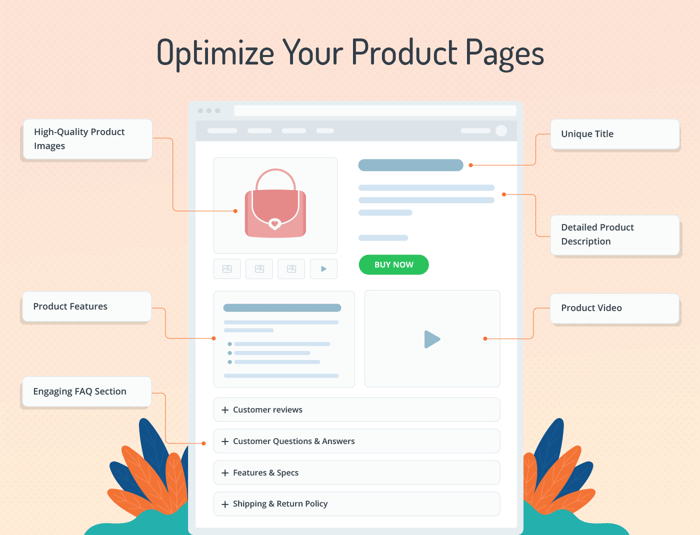
Optimize Product Descriptions
Optimizing product pages should start with creating unique and compelling product titles.
Use a highly specific product title such as “Digital print for wall art” instead of, say, the generic “Digital print.”
However, try to keep your title below 60 characters because Google may trim longer titles in the search results.
Next are product meta descriptions. Each of your product pages must have a meta description that provides a straightforward insight into what your product is about.
As people can see meta descriptions in Google search results without clicking links and pages, they should contain important details that quickly capture people’s attention.
Third, write product descriptions that highlight the standout features and benefits of your art or craftwork. They should include information like materials, size, availability, and price.
And keep your product descriptions updated. For instance, if a particular product is sold out, don’t forget to inform your audience.
One more thing: Product descriptions should contain keywords, that is, words you know people use when they search online for products like yours.
Finally, add high-quality product images and, if possible, videos of your products. People are predominantly visual beings, so having nice visuals showcasing your products makes your online offerings immediately more appealing to your visitors.
For instance, photos of how your products look when used by real people in real-life situations can be of high value to any website visitor. And photos taken from different angles against a white or solid background allow your product to stand out prominently and keep your audience’s focus on it.
Videos can help your audience relate even more to what you offer. You can include people, props, or settings that help create a story around your product in a relatable way.
Both images and videos allow you to present more complex details much more effectively than text, making it easier for visitors to familiarize themselves with your products.
Categorize Your Products
To ensure top-notch site navigation and user experience, you should organize your products into categories and subcategories. And for that, you need a category page.
As you could’ve easily guessed, a category page arranges products or content with the same or similar theme under the same category. Essentially, it’s an organized directory within your website that helps your customers find what they need.
To create a good category page, you must first think of the best way to group the products you sell. The number of categories would largely depend on the diversity of your offerings.
For example, if you create various forms of art, you may have these categories:
Prints
Posters
Canvases
Goodies (miscellaneous art products like stickers, bookmarks, and other small items)
Or if you sell only prints, you can categorize them into:
Digital prints for wall art
Digital prints for shirts
Make sure to optimize your category page for SEO by writing suitable titles and meta descriptions, as well as using target keywords. After all, it’s a website page, so you still need to take the necessary steps for people to find your page more easily than your competitors’ pages.
Last but not least, include links to your categories and subcategories in the navigation menu. A good navigation menu helps your customers quickly find the sections they’re interested in without clicking through multiple pages. And the categories of products you sell would be one of the first things they’d want to see.
Your Big Cartel Blog
Start a Blog
A blog is critical for SEO. And it’s next to impossible to take the first step toward that almost mythical top place on Google’s first page without ever starting a blog.
An exhaustive list of blogging benefits would be pretty long. But if you’d like to know the most important, here is a short one:
A blog drives targeted traffic to your website. When you publish blog posts revolving around relevant keywords, i.e., topics, you increase your store’s visibility and attract traffic organically – without paying for ads.
A blog builds your niche authority. Publishing consistently good blog content on subjects in your niche means manifesting yourself as a domain authority. Authority builds credibility, and when people see you as trustworthy, they’re more likely to buy from you.
A blog promotes your products. It allows you to showcase your offerings differently than on product pages, which is nice for a change. You can create heaps of diverse, engaging content that introduce your products to your audience in a non-salesy fashion yet motivate them to buy.
A blog improves user engagement. You can add a comment section after your blog posts and invite readers to express their opinions or even upgrade your content with new valuable information. Also, you can add social media share icons to let them spread the word about the good things they’ve read.
A blog serves as a catalyst for email marketing and social media promotion. You can rehash blog content for social media – say, by creating a short post where you add a link to your latest blog post, inviting people to check it out – or send it to your subscribers in your email newsletter.
Is there a downside to a blog?
Well, kind of. Starting a blog can be hard when you have suboptimal conditions.
Think of it this way. When you camp, you need camping equipment. When you run, you need running equipment. And when you blog, you need blogging equipment. Not something that can be adapted for blogging (among other things), but blogging equipment. Specialized. Purpose-built. Something like… DropInBlog.
DropInBlog lets you add a blog to your Big Cartel store in simple steps and work toward a better SEO and user experience from the moment you add a blog.
Some of the DropInBlog highlights, apart from creating post after post conveniently in a cozy editor (yes, editors can be cozy!), are the following:
Create categories for your blog to organize your posts in different groups so people can find the type of content they want to read.
Add authors with their bios and social media links if you have multiple in-house writers or collaborate with external writers or maybe even bloggers, influencers, and other brands popular in your niche.
Optimize your blog posts for search engines with the SEO Analyzer, a tool that evaluates your post’s page title, meta description, and content, giving you guidance on what you do well and what you need to improve.
Manage multiple blogs using a single login with the unified account login feature.
And when you’re all set, don’t forget to add a link to your blog in the navigational menu. There’s hardly a better way to make it easy to find it.
Do Keyword Research
Writing blog posts based on your inspiration of the moment may appear viable and even cool at the beginning. However, since blogging requires discipline and regularity, expecting to be continuously inspired is not a feasible long-term approach – not even for a writer like Haruki Murakami.
Data and informed decisions should back up every blog post you write since blogging is not a casual affair. It’s a content marketing method, and keyword research is its backbone.
After adding a blog to your Big Cartel store, the next big step is to do keyword research. Keyword research allows you to discover what to write about, that is, what’s relevant to your offerings, niche, and audience.
Keywords are common words and phrases users type in a search engine like Google to find the latest information, learn something new, research a company, or make a purchase.
Hence, doing keyword research means figuring out which words or phrases your target audience uses, creating blog posts around those topics, and incorporating related keywords into your blog as well as product and category pages.
Google and Amazon
You can start your keyword research with as simple a step as typing a word or phrase you know is absolutely relevant to your work. For instance, “pottery” if you sell pottery.
Google autocomplete will start showing you related queries as you type your word. Google’s suggestions will be based on what people typically search for when they’re interested in pottery.
If you add a space or place your cursor before your word, you’ll see even more keyword phrases containing it. Also, when you type words and press Enter, Google will show you common related questions people ask (People Also Ask) about pottery or whatever it is that you offer.
You can do a similar thing on Amazon. The only difference is that Amazon is more product-focused and often includes filterable details like price.
When you’re done with Google and Amazon, compile all the interesting keywords you’ve found and put them in a spreadsheet.
Specialized SEO Platforms
As helpful as typing words in search engines is, you must up your game. And there’s no better way to do that than to do keyword research using specialized SEO platforms, such as Ahrefs, Keyword Tool, MarketMuse, Moz, or Semrush.
Even if their paid subscriptions can be a bit on the expensive side, these platforms typically provide a limited number of free features that can support your BigCartel SEO efforts tremendously. They cut so much time by giving you important information and insights into your keyword of interest, such as:
Keyword volume
Keyword difficulty
Keyword variations
Related questions
User intent
Keyword strategy
SERP (search engine results page) analysis
Now that you have a long list of relevant keywords, how do you decide which to focus on?
